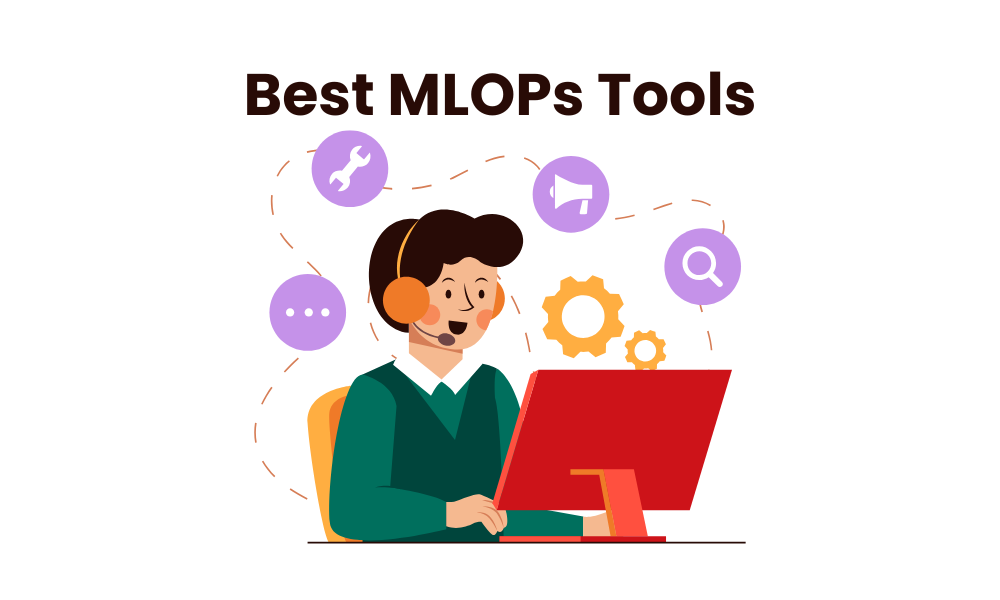Top 5 MLOps Tools

Table of Contents
Introduction
MLOps is a unique field that I believe is safeguarded by the dominance of AI. Why? Because there are so many moving parts and complex steps involved. You need a proper team of machine learning engineers to deploy, maintain, monitor, and retrain models continuously. However, machine learning engineers can make their lives easier by using the best tools for experiment tracking, model registry, model serving, machine learning pipelines, model monitoring, and distributed computing for training and model inference. This blog introduces you to the top 5 MLOps tools that can simplify your workflow and help you choose what best suits your needs.
The Top 5 MLOps Tools
All the MLOps tools are open source and also come with managed services. This means you can use them locally or connect to them using the cloud.
1. MLFlow
MLFlow is an open-source tool known for its ability to track experiments and manage models throughout their entire lifecycle. It allows users to log various metrics and also offers features for version control, packaging models, and serving them.
- Key Feature: It simplifies the machine learning lifecycle by enabling the recording of metrics, version control for artifacts and models, and providing serving endpoints.
- Ideal For: Teams seeking a comprehensive tool for experiment tracking and model management.
2. Prefect
Prefect is a powerful workflow orchestration tool designed to automate and streamline your machine learning workflows. It excels at scheduling tasks and monitoring their execution, ensuring complex workflows run smoothly.
- Key Feature: Prefect enhances reliability by offering tools that help schedule and monitor complex tasks effectively.
- Ideal For: Machine Learning teams focused on automation who want to ensure the timely execution of every task in their machine learning pipeline.
3. BentoML
I simply love BentoML because it provides the easiest way to serve and deploy machine learning models. With BentoML, you can easily package models for production use, whether they are LLMs, vision models, or even simple classification models.
- Key Feature: It streamlines the process of converting and deploying models into production-ready APIs. Additionally, it comes with BentoCloud, which makes it even simpler to deploy models to the cloud.
- Ideal For: Teams seeking straightforward deployment solutions that facilitate scaling and easily integrate into existing systems.
4. Evidently
Evidently focuses on the crucial aspect of model monitoring and evaluation after deployment. It offers tools that continuously track model performance and assess data quality, providing insights that help tackle potential issues early on.
- Key Feature: Evidently helps maintain model integrity by providing metrics and visualizations of model performance over time.
- Ideal For: Teams keen on ensuring their models remain accurate and effective in a production environment.
5. Ray
Ray is a powerful distributed computing framework perfect for scaling machine learning tasks. It allows for parallel and distributed processing, making it ideal for organizations that handle large-scale operations and need to leverage multiple machines efficiently.
- Key Feature: Train and serve models using both parallel and distributed computing, boosting the efficiency of ML applications.
- Ideal For: Teams looking to scale their machine learning frameworks and applications seamlessly across numerous computing resources.
MLOps Tools Overview
To further aid your evaluation, here’s a comparative overview of these tools:
| Tool | Main Functionality | Supported Frameworks | Deployment Options |
|---|---|---|---|
| MLFlow | Tracking experiments and managing models | TensorFlow, PyTorch, Scikit-learn, etc. | Cloud, on-prem, containers |
| Prefect | Orchestrating and scheduling ML workflows | Works with any framework via integrations | Cloud and server-based |
| BentoML | Packaging and serving machine learning models | TensorFlow, PyTorch, Scikit-learn, etc. | Cloud, on-prem, Docker/Kubernetes |
| Evidently | Monitoring model performance and data quality | Any model that outputs logs or metrics | Cloud and on-prem |
| Ray | Distributed computing for scaling operations | TensorFlow, PyTorch, and custom frameworks | Cloud, on-prem, Kubernetes |
Conclusion
Each of these tools plays a unique role in the machine learning lifecycle. Whether you’re focused on tracking experiments, automating workflows, serving models, monitoring performance, or scaling operations, there’s a tool tailored for your needs. Choosing the right MLOps tool depends on your specific project requirements, team familiarity, and the complexity of your applications. I hope this guide helps you navigate your MLOps journey with confidence.